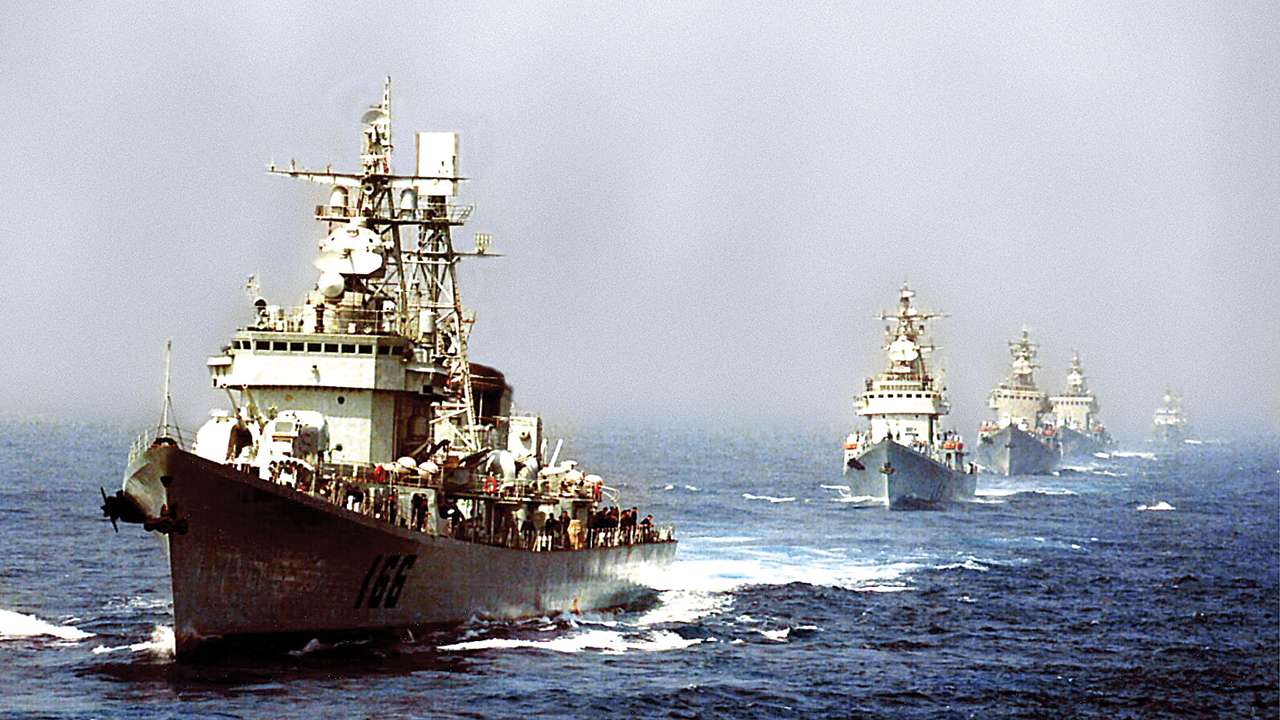
China has astounded the world with the speed and scale of its creation of artificial islands and military infrastructure in the South China Sea.
The first Chinese dredger initiated land reclamation in December 2013. Five years later, China has completed building its manmade islands and is now steadily ramping up its military assets in the South China Sea.
Even after an international arbitral tribunal invalidated its claims in the South China Sea through a ruling in 2016, China continued with the frenzied expansion of its frontiers. Yet, it has incurred no international costs for pushing its borders far out into international waters.
Today, China has consolidated its hold in a strategically crucial body of water through which $5.3 trillion in global trade flows every year. It has set up an interconnected array of radar, electronic-attack facilities, missile batteries and airfields there.
And by turning its manmade islands into military bases, it has virtually established permanent aircraft carriers, whose role extends to the Indian Ocean and the western Pacific.
The South China Sea, in fact, highlights that Beijing’s favoured frontier strategy is pivoted on “salami slicing”. This involves — as witnessed in the Himalayas since the 1950s — a steady progression of small actions, none of which serves as a casus belli by itself, yet which over time lead cumulatively to a strategic transformation in China’s favour.
And by camouflaging offence as defence, China presents a targeted state with a Hobson’s choice: endure the territorial loss or face a dangerous and costly war with a great power.
As other Asian nations are discovering, including India in the Himalayas and Japan in the East China Sea, the China challenge centres on Beijing’s lack of respect for existing frontier lines. China is still working to redraw political boundaries, almost 70 years after communists seized power there and began expanding the frontiers.
China clearly has been emboldened by America’s muted response to its expansionism. The US has focused its concern merely on safeguarding freedom of navigation through the South China Sea, not on ratcheting up pressure on China to stop its territorial revisionism.
In fact, the US has refused to take sides in the territorial disputes between China and the other claimant-states in the South China Sea. The US has similarly stayed neutral on disputes elsewhere between China and its neighbours, including in the East China Sea and the Himalayas.
For example, President Donald Trump’s administration did not issue a single statement in India’s support, but stayed neutral during the 73-day military standoff between Indian and Chinese forces on the remote Himalayan plateau of Doklam in mid-2017.
The Trump administration also stayed silent when Chinese military threats forced Vietnam in March 2018 to halt oil drilling within its own exclusive economic zone.
To be sure, the Trump-led US has stepped up the so-called freedom of navigation operations, or FONOPS, in the South China Sea.
However, while the US has yet to provide strategic heft to its much-publicized strategy to ensure a “free and open” Indo-Pacific region, China has embarked on robust initiatives, such as the twin Silk Road projects, with the aim of changing the regional geopolitical map.
ASEAN disunity has also aided Beijing’s aggression. The South China Sea has emerged as ASEAN’s Achilles heel. ASEAN’s reluctance to take a unified stance may have delighted Beijing — its largest trade partner — yet, by conveying weakness, it allows China to do as it pleases.
China’s strategic aim in the South China Sea is to legitimise its control over this critical corridor. Through various actions, China is etching a lasting presence in the claimed areas. For example, to create an administrative base,
including setting up a local civilian government in the South China Sea, Beijing has established “Sansha City” on Woody Island. Woody Island was in the news recently when China, for the first time, landed the nuclear-capable H-6K heavy bomber aircraft there.
There is a distinct possibility that, like it did in the Paracel Islands in 1996, China might declare “straight baselines” in the Spratly Islands. Such baselines, connecting the outermost points of the island chain, would seek to turn the sea within, including features controlled by other nations, into China’s “internal waters”.
Against this background, the South China Sea has emerged as the symbolic centre of the international maritime challenges of the 21st century.
The developments in the South China Sea — the world’s main maritime hotspot — hold the potential of upending the current liberal world order by permitting brute power to trump rules.
For India, the South China Sea, which connects the Indian and Pacific oceans, is of central importance. About 60 percent of India’s seaborne trade passes through the Strait of Malacca, the link between the Indian Ocean and the South China Sea. China’s expansionism in the South China Sea directly impinges on India’s vital interests.
In fact, China’s establishment of a naval hub in Djibouti — its first overseas military base — and its increasing submarine forays into the Indian Ocean draw strength from its aggressive actions in the South China Sea.
Given the South China Sea’s centrality to the wider geopolitics, balance of power and maritime order, likeminded states must work closely together to shape developments there, including ensuring that aggressive unilateralism is no longer cost-free. Failure to do that will create a systemic risk to Indo-Pacific stability and the world order.
Author is a leading geostrategist